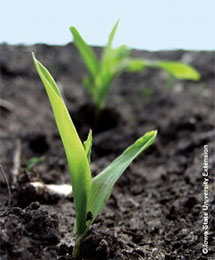Phosphorus Behavior in Soil
Written by Mark Jeschke
Written by Mark Jeschke

Phosphorus is essential for plant growth and is second only to nitrogen in the frequency which it limits yield in crop production
Phosphorus plays a critical role in energy storage and transfer in plants and is a component of DNA and RNA.
The foregoing is provided for informational use only. Please contact your Pioneer sales professional for information and suggestions specific to your operation. Product performance is variable and depends on many factors such as moisture and heat stress, soil type, management practices and environmental stress as well as disease and pest pressures. Individual results may vary.